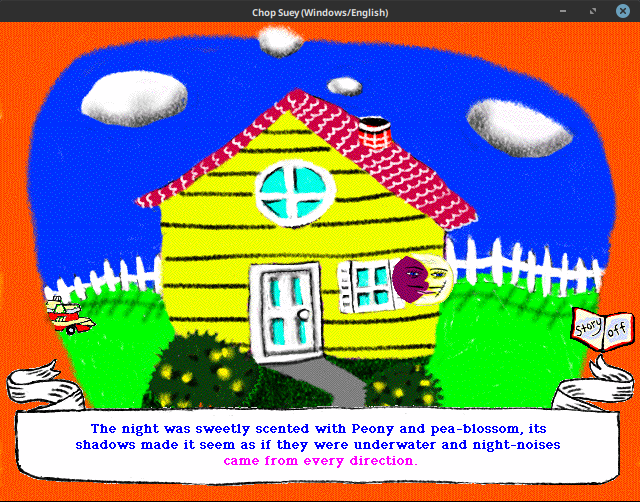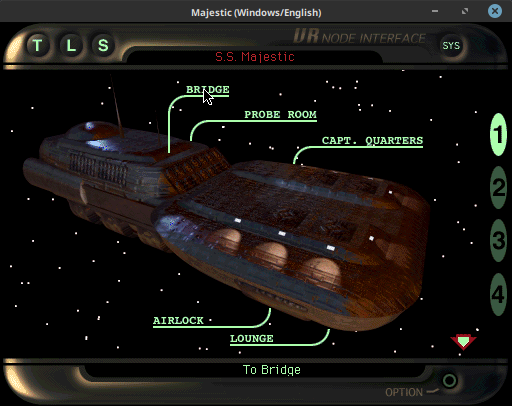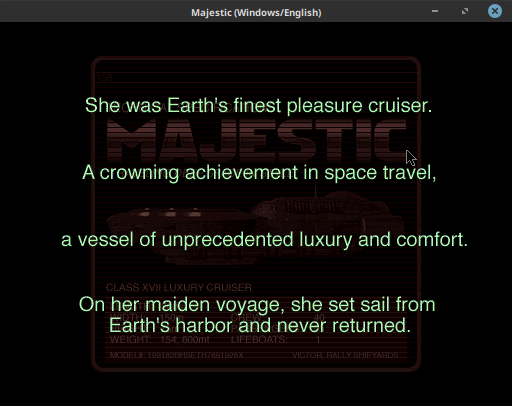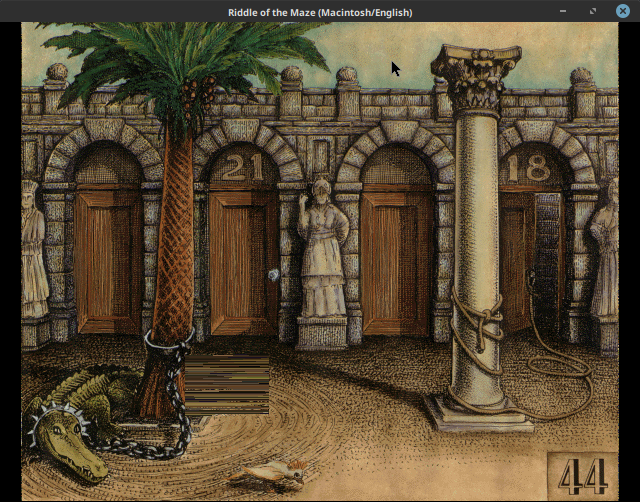Last week was the last official week in the GSoC work period. I plan to submit my final evaluation after I post this. There you will be able to see some of the highlights from my time with ScummVM this summer.
In the past week, though, I didn’t start work on any new features. I spent a while understanding the data path location mechanism that the Mac version of Journeyman Project 2: Buried in Time used, and I ultimately discovered some buried XFCNs. (As @djsrv helpfully explained, XFCNs are external functions from (HyperCard)[https://en.wikipedia.org/wiki/HyperCard] that can often be called as regular Lingo.) One of these just looped through all the volume names on the system, looking for the proper CD name. This Journeyman Project is split across three CDs, so some more additions will be needed.
I also fixed an obscure issue decoding the hex format strings for our Macintosh text implementation. Now, the main screen of Majestic looks almost perfect – with proper cursors, which I also patched to load properly – and consistent text formatting.
[
 ]
]
Additionally, I investigated and fixed several bugs with my good old friends the widgets. Now Chop Suey also looks very accurate, and there is no more flashing cursor or cut-off text boxes. Text borders are now (almost) working properly again, which makes the Lingo Dictionary movies more pleasant to look at.
[
 ]
]
For being the rendering guy this summer I haven’t posted nearly enough pictures, so I put those two here for you to enjoy. I’ve enjoyed working with ScummVM, and I plan to start contributing again once I get comfortable in my university schedule.

